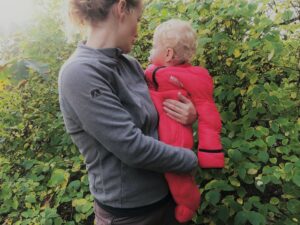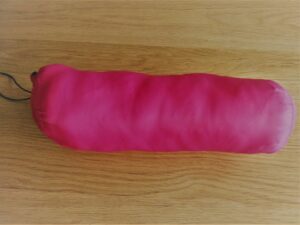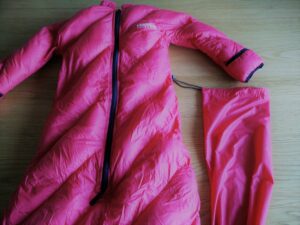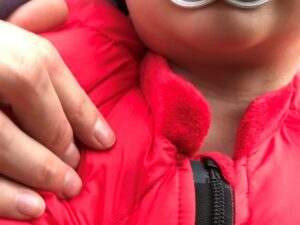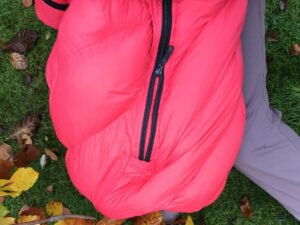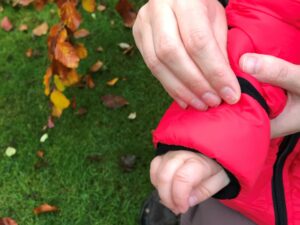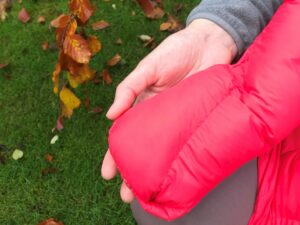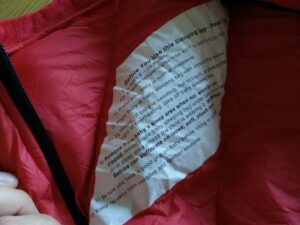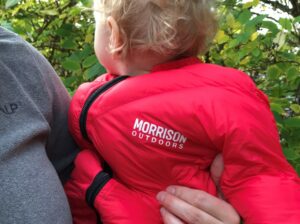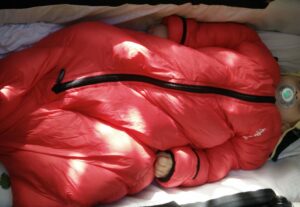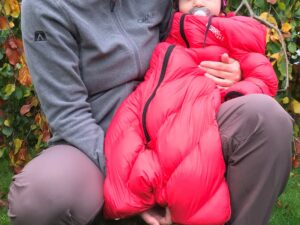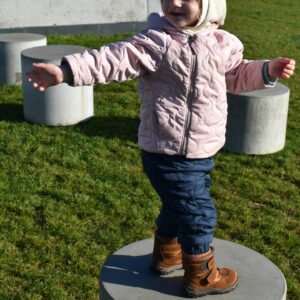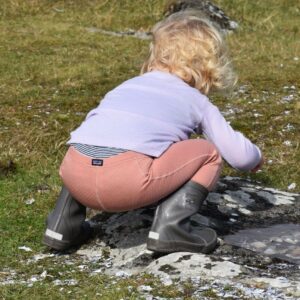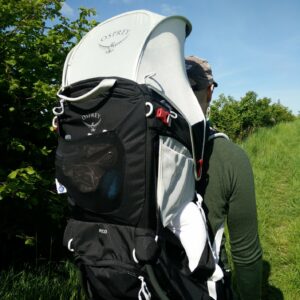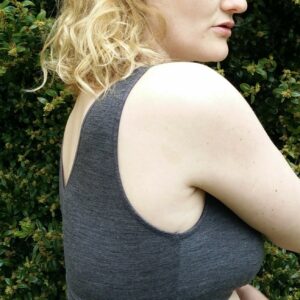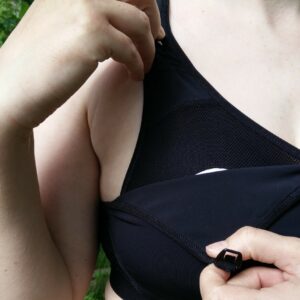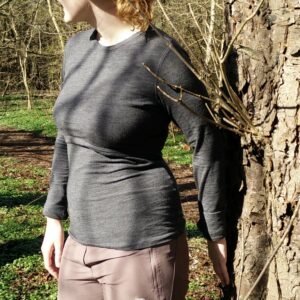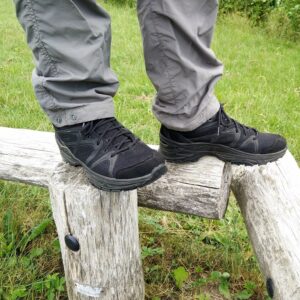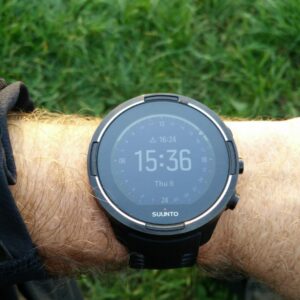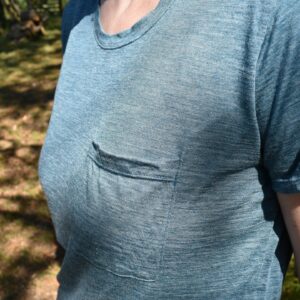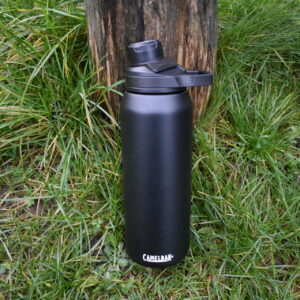The American startup Morrison Outdoors has been very successful since its Kickstarter campaign for its unique baby sleeping bags in early 2019. Quite unprecedented, the brand already had its products featured on the shelves at the iconic outdoor retailer REI the very same year! We were thus over the moon when Morrison Outdoors contacted us this summer to hear if we wanted to test any of their products. We asked for the Little Mo 40 baby sleeping bag for our daughter MK, and started testing it as soon as the temperatures were sufficiently low. After using the sleeping bag for the past months, I can safely say that the Morrison Outdoors Little Mo 40 baby sleeping bag is suitable for:
- Camping
- Hiking
- Backpacking
- Travelling
- Everyday use
Materials
Morrison Outdoors offers two types of sleeping bags in two sizes; a down sleeping bag for babies and toddlers aged 6 months to 2 years (Little Mo 20), and a bigger for children aged 2 to 4 years (Big Mo 20), and a synthetic version in the same sizes called Little Mo 40 and Big Mo 40, respectively. All are shaped as a long jacket that ends up in a fully enclosed foot box. I was instantly drawn to the down sleeping bag, as I myself love sleeping in down duvets, but I ended up choosing the synthetic version for our daughter for multiple reasons. First of all, she is a quite warm child and the temperatures suitable for using the synthetic sleeping bag (40⁰F- 60⁰F / 4⁰C-15⁰C) simply seemed more realistic for us to camp at than that of the down sleeping bag (20°F- 60°F /-6°C-15°C). But what made up my mind is that only the version with synthetic insulation offers sleeves which can be opened and closed at the cuffs, while the down sleeping bags have completely closed sleeves. I’ll describe why this feature was so important to me further below.
The insulation of the Morrison Outdoors Little Mo 40 baby sleeping bag, which I ended up choosing, is made of lofty polyester fiber which anyway performs better than down under wet circumstances. This is not only great considering the Scandinavian weather that we are exposed to daily, but also means that the whole sleeping bag will dry faster if there should be any diaper accidents during the night. MK does sometimes curl into in positions where the pee seems to go everywhere but in her diaper. You can read more about how synthetic insulation compares to down (albeit in jackets) here. Both the shell and liner material is 100 % Ripstop Nylon, which is silky smooth to the touch, but the Morrison Outdoors sleeping bags are furthermore equipped with a plush soft fleece collar, chin guard and zipper flap.
Features
Besides the fleece details, the Little Mo 40 (and its “siblings”;) is full of well-considered features when it comes to sleeping bags for so small children. It is very obvious that the founders of Morrison Outdoors are in fact parents themselves (to young Morrison, as it happens) who tried to design the perfect sleeping bag for all their child’s needs rather than some clueless childless designer at a big company. For example, something seemingly silly (at least to my sleep-deprived head for a few moments), but very crucial: The zipper is inverted, so it zips from the collar and down towards the footbox. This has multiple benefits. First and most importantly, you can just unzip it halfway to change a diaper easily while your child is all snug and warm inside! Similarly, you can also unzip it just a bit to ventilate the child a bit if you think it is a bit too warm in the Little Mo 40 baby sleeping bag.
Having the zipper slider away from the face is also a benefit when your child has otherwise achieved enough dexterity to (try to) open the zipper on its own. The slider of the zipper has a big handle, which is great when you are fumbling in the pitch black night, but could be a nuisance to the child if the zipper ran the usual way and ended up at the face/chin. The zipper is also equipped with a draft tube which keeps warm air from escaping through the coils of the zipper. Now, to the feature which made up my mind about choosing the synthetic version over the down sleeping bag – the sleeves with open-and-close-cuffs. In continental Europe, scratch mittens and closed sleeves are generally thought of as a no-no (especially for indoor use), because they among other things keep babies from self-soothing. MK has thus always had uncovered hands except when sleeping outside in the pram where we put mittens on her (that she usually managed to wiggle out of) when she was younger.
Sleeping Comfort
Unfortunately, the actual test subject of the Morrison Outdoors Little Mo 40 baby sleeping bag cannot express her opinion more detailed than: “Hey!” and “No!” which makes for a rather short, and perhaps ambiguous review. But I do dare to say that she seems happy in the sleeping bag, which we have mostly used for hour long naps in nature, both during hikes and in everyday life. MK had just turned one year when we started using it in mid-September and was thus already a toddler, but it is designed to be used safely for babies as young as six months. We have noticed that MK tends to fall asleep very quickly in the Little Mo 40 (always a plus!), so we assume that she feels safe, warm and snug in it. The coldest temperature she has been sleeping in it until now was around 7 ⁰C (45 ⁰F), and she seemed comfortable in it.
There is, however, a detail about the sleeping bag which makes me question using it at much lower temperatures, at least as my daughter get bigger: The big stitched baffles. The synthetic insulation is distributed in large oblong parallelogram-shaped pockets as the inner and outer layers of the sleeping bag are stitched directly together. The problem with this type of construction versus the more rare (and expensive) baffle-box construction is that it creates cold spots along the stitches as the insulation tends to gather along the middle line, with little or no insulation along the stitches. I’m not so worried about cold spots from the chest down as the foot box is roomy enough to create one big warm pocket, but more in the narrow areas like the sleeves and around the neck. As an adult you can actually feel it when you put your hand through a sleeve on the Little Mo 40: In some areas the insulation is thick, and almost bundled up while there in other places is next to no insulation between the inner and outer layer.
I think the problem is that the baffles are simply too big from the chest up to ensure an even distribution of insulation. A lot of insulated jackets have much smaller baffles (e.g. the Dark Peak Nessh, CimAlp PrimaLoft and Isobaa insulated jackets) to distribute insulation evenly, and if you think about it, the Morrison Outdoor sleeping bags are actually hybrids between insulated jackets and sleeping bags. It would thus be a big improvement if the baffles would be reduced in size, at least on the sleeves and in the neck area. For now, I will pay extra attention when MK is sleeping at lower temperatures, and check if she literally has cold spots on her arms and chest when I take her out of the sleeping bag – especially as she grows bigger and her arms will fill out the sleeves more.
Washing and Drying
The Morrison Outdoors Little Mo 40 can be machine-washed cold without bleach or fabric softeners. It should be tumble-dried at a low temperature with two tennis balls, but I can reveal that we have also just air-dried it once, which went surprisingly fast and the insulation as evenly distributed as before.
Verdict
The Morrison Outdoors sleeping bags for children are a great investment for those who camp out with their little ones regularly. The Little Mo 40 which we tested is full of practical details which will help to make your child to sleep comfortably, as you can regulate the temperature with the inverted zipper as well as change a diaper fast and fuss-free while the little one is warm and snug. My only reservation is the size of the baffles, which I think is too big to ensure an even distribution of the insulation around the arms and chest.
If you have any questions about this product, drop me a line in the comments below.
Rating
| Design |  |
| Quality |  |
| Comfort |  |
| Functionality |  |
We field tested this product. The rating shows its overall performance.About Rating
Pros:
- Soft materials like silky nylon, plush fleece and bouncy insulation
- Inverted zipper for easy diaper changes and ventilation
- Sleeves with open-and-close-cuffs
- Packs small
Cons:
- Insulation tends to bundle up due to baffle size, which creates cold spots
